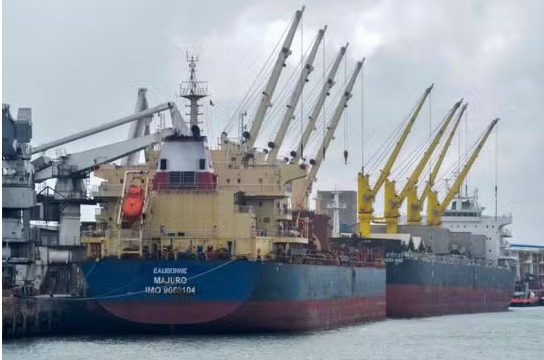Houthi attacks are painless for Mombasa, the major port on the Indian Ocean, whose activity is even boosted by an improved economic and logistical environment.
For once, the consequences of yet another global shock are not dramatic for Kenya, which in recent years has suffered severely from the impacts of the Covid-19 pandemic, the war in Ukraine, and the inflation crisis. Mombasa, its major port located on the Indian Ocean and serving all neighboring inland countries up to the Democratic Republic of Congo, has been spared from the attacks launched since mid-November 2023 in the Red Sea by the Houthis, which have drastically reduced activity through the Suez Canal.
“The impact has been very minimal for us due to our geographic location,” explains Elijah Mbaru, the appointed CEO of the Kenya Ship Agents Association (KSAA), which groups major shipping companies and many operators of this key infrastructure for the country, a regional economic engine for 55 million people. Crucial Europe-Kenya trade has continued by rerouting around Africa via the Cape of Good Hope, while vessels connecting Asia to Europe—normally transiting through the Suez Canal—generally do not call at Kenya.
KSAA notes that Mombasa has even recorded growth: a 7% increase in total volumes handled between the first quarters of 2023 and 2024, and especially a 32% rise in container traffic, which accounts for about two-thirds of activity. However, this surge is not linked to the Red Sea crisis (such as rerouting ships avoiding Red Sea ports), insists Mr. Mbaru. “What is particularly increasing is transit freight destined for the Great Lakes region, these landlocked countries tending to prefer Mombasa over Dar es Salaam in Tanzania,” which is facing logistical difficulties, he notes. He adds that the macroeconomic situation has also improved, with the Kenyan shilling recently recovering against the dollar, revitalizing imports.
Unfortunate Setbacks for Local Industry
On the other hand, as in global trends, freight prices have skyrocketed in the region. A Shanghai-Mombasa route cost $1,780 (1,640 euros) per 40-foot container in October 2023, according to KSAA. It now reaches $5,000. And costs increase further for destinations like Kampala, Kigali, or Goma in the Democratic Republic of Congo. For Jason Reynard, regional director of logistics provider AGL (formerly Bolloré Logistics), this extra cost is not necessarily dramatically visible at retail, being spread across thousands of products inside a “box.” However, he notes that “any additional cost is partly, if not fully, passed on to the final price paid by the consumer,” in countries where budgets are already very tight.
More importantly, Mr. Reynard points out the consequences for local industry of delays caused by rerouting some ships via the Cape of Good Hope and disruptions to normally tightly scheduled shipping routes. These unfortunate delays particularly affect exporters of perishable goods such as flowers or fruits and vegetables, or factories. “Delays can range from two weeks to two months,” he says. “If you are a Kenyan manufacturer expecting equipment on a certain date, you can be blocked, out of stock. The impact [on prices] is probably greater than the cost increases of transport.”
Among the countries most penalized by this crisis are landlocked nations such as Ethiopia (with over 123 million inhabitants, reliant on neighbors, primarily Djibouti, for supplies) and, especially further north, Egypt. “There, it can truly be called a catastrophe,” says Elijah Mbaru. Revenue Cairo earns from Suez Canal transit reached a record nearly $9 billion in the 2022-2023 fiscal year, a valuable source of foreign currency for this large country (110 million people) facing economic difficulties. In mid-February, President Abdel Fattah Al-Sissi estimated revenue losses between “40% and 50%” compared to the previous year. Since then, authorities have not released new figures, but the Red Sea crisis has persisted.


